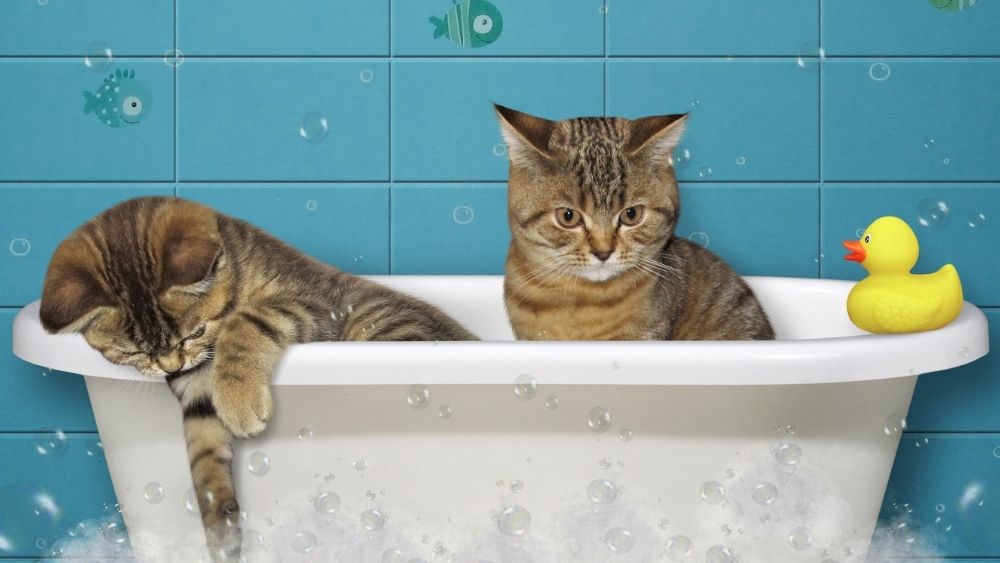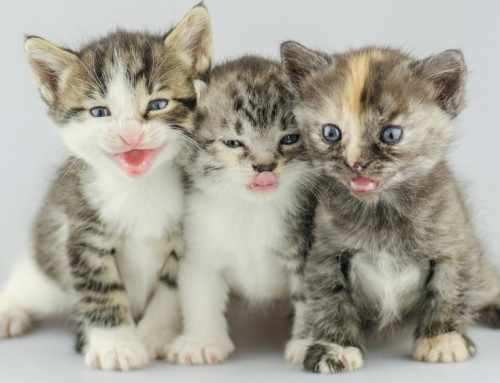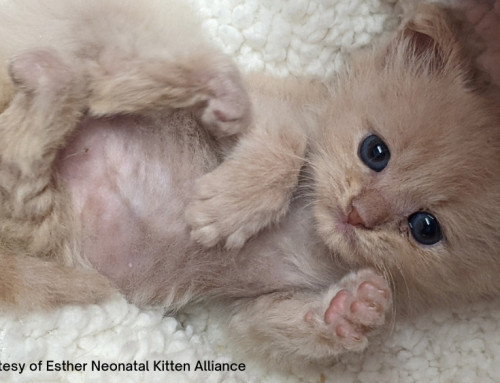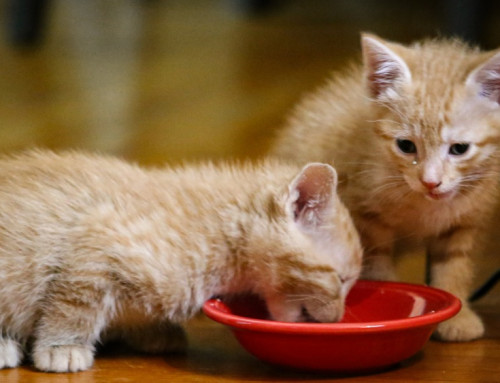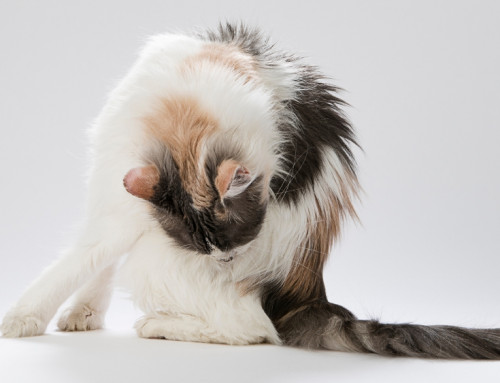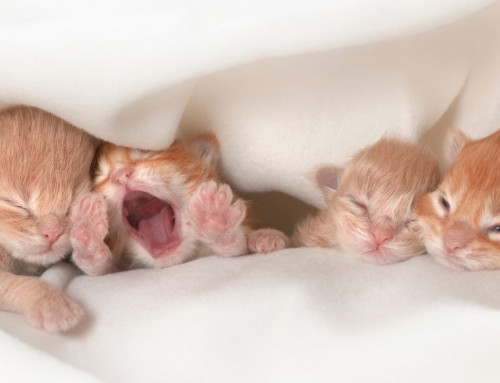Share this resource or email it to a friend!
If you’re lucky enough to foster a mom cat and kittens, she will hopefully take charge of keeping them clean. If you’re caring for orphaned bottle baby kittens, you’re in charge.
When you get kittens, with or without a mom, use a flea comb to detect fleas. They suck blood, which can kill kittens, and need to be removed right away. A fact sheet about fleas is included in the Resource section below.
You will need to give orphaned kittens a full-body cleaning after each feeding. Use a barely damp, warm washcloth or toothbrush, and make short, gentle strokes that mimic mom cat’s licking tongue.
Kittens who are dirty may need more than just a once-over. Plan ahead for more serious cleaning time with these tips:
- Take some of the scariness out of the sink. Put in some favorite plastic toys and allow kittens to play there from time to time.
- Introduce kittens to the hair dryer in their room. Put the dryer on the floor, and play with a wand toy around the dryer. Turn it on its lowest setting at a distance from the kittens, and let them approach it on their own. Some kittens may avoid it, but some may be interested in it and unafraid.
- Trim sharp kitten nails at least a day before the bath. That way, the kitten doesn’t have to deal with two potentially-unpleasant events back-to-back. Plus, you don’t want the kitten to associate nail trims with baths.
- Wear a long-sleeved top made of a material that’s hard for kitten claws to get caught on or go through.
If you have the option, bathe kittens when they’re calm or tired. Not all baths are created equal. They include:
- Spot dry baths. These are preferable for a small area and involve wiping it gently with a warm-water-dampened cotton ball or square, paper towel or washcloth. Spot dry baths don’t involve soaking the area down to the skin.
- Spot wet baths. These involve cleaning a small area, for example the rear end, with a warm water soak down to the skin, and shampooing if needed.
- Full wet baths. These are the ultimate spa treatment and involve soaking the entire kitten, minus the head, down to the skin and shampooing.
On game day, prepare the bathroom, before you bring in the kitten, by assembling all your supplies, including:
- A heater to warm the room to 80 degrees. If the bathroom has a ceiling heat lamp, use it
- A rubber mat placed in the bottom of the sink to keep the kitten from slipping.
- A brush or comb to gently remove any tangles and knots.
- An area that’s out the kitten’s reach, but not yours, to put:
- Several containers of warm water.
- An insulated, shopping-type bag that’s holding warmed towels.
- A roll of absorbent paper towels.
- A non-breakable flat plate in which you’ve put shampoo.
- A hand-held hair dryer.
- A treat or treats.
Now for the rub-a-dub-dub of a full wet bath:
- Have some warm water in the sink before bringing in the kitten. Once you’ve brought the kitten into the room, close the door to prevent an escape. Or, you can forgo the water in the sink and opt to slowly pour warm water over the kitten using a plastic cup or pitcher until s/he is completely wet. Some people place kittens under the faucet or use a sprayer, but running/spraying water may scare the kitten. Whichever method you use, place the cup, pitcher, faucet or sprayer as close to the kitten’s body as possible because less water moving around may also be less scary.
- Place your thumb on the kitten’s back and the rest of your hand under the tummy as gentle restraint. Talk softly to and pet and stroke the kitten to help keep everyone calm. Never raise your voice, shake or handle the kitten roughly.
- Scoop out a small amount of a mild, kitten-safe shampoo or Dawn dish liquid from the flat plate, and put it on the kitten. Start around the neck, and work gently down to the skin on the back, tail, genital area, back legs, groin, belly, front legs and chest. Do not apply shampoo to the head or face; use the spot dry method for those areas while the kitten is wrapped in his warm, post-bath towel.
- Rinse all the shampoo off. To avoid turning on the scary faucet, gently “pour” warm water from the cup or pitcher over the kitten. If the kitten isn’t scared of the faucet water, you can use a gentle stream for rinsing. If your sink has a sprayer, you can use it as long as it’s flowing gently, and your kitten isn’t panicking. Place the cup, pitcher, faucet or sprayer as close to the kitten’s body as possible because less water moving around may also make be less scary.
Young kittens are unable to regulate their body temperature, so it’s critical that they not become chilled. The next steps apply to all types of baths:
- Blot the kitten with an absorbent paper towel to remove excess water before wrapping the kitten in a warm towel. Rub vigorously but gently to dry the kitten. If the towel becomes wet, use another dry, warmed towel.
- Dry the kitten completely with a hand-held hair dryer on a low setting. Move the hair dryer around with one hand, and move your other hand along the fur to separate it and to be sure you don’t burn the kitten. You may be able to distract the kitten with some special treats.
Return squeaky clean and dry kittens to their room, and provide more treats or a favorite toy as a reward. Mission accomplished, and you both survived!

